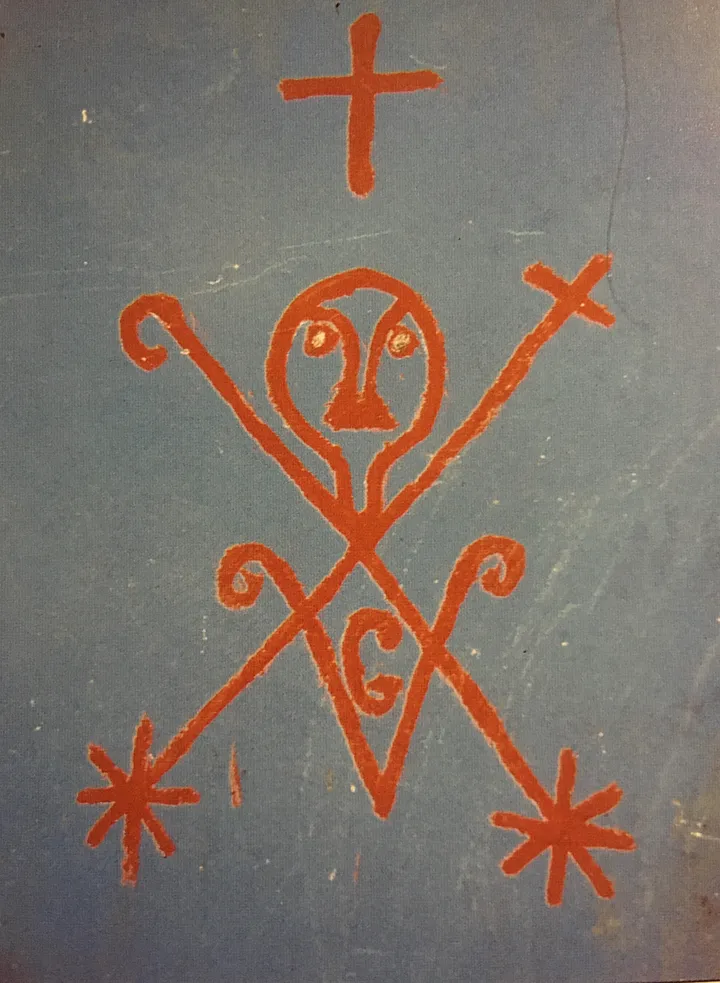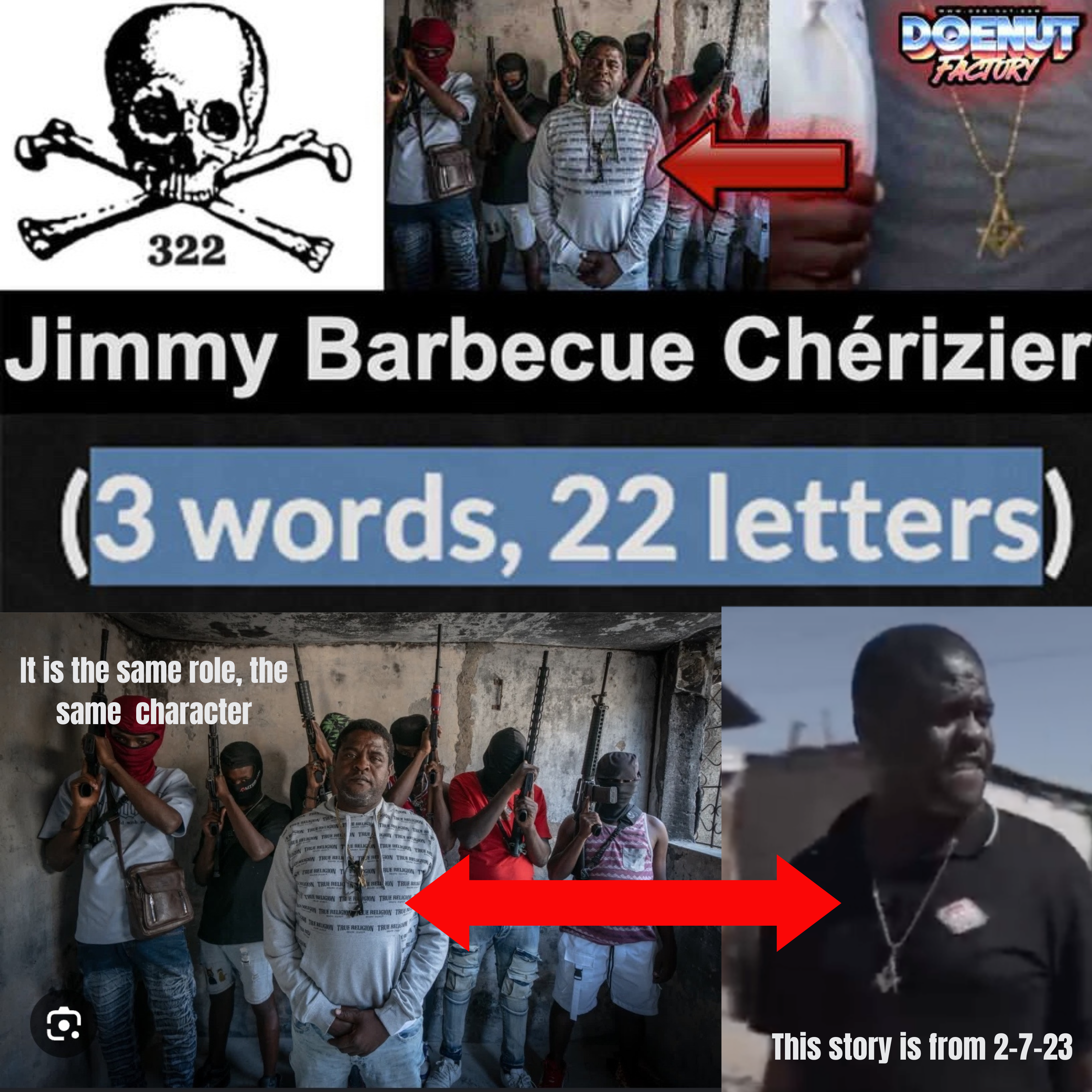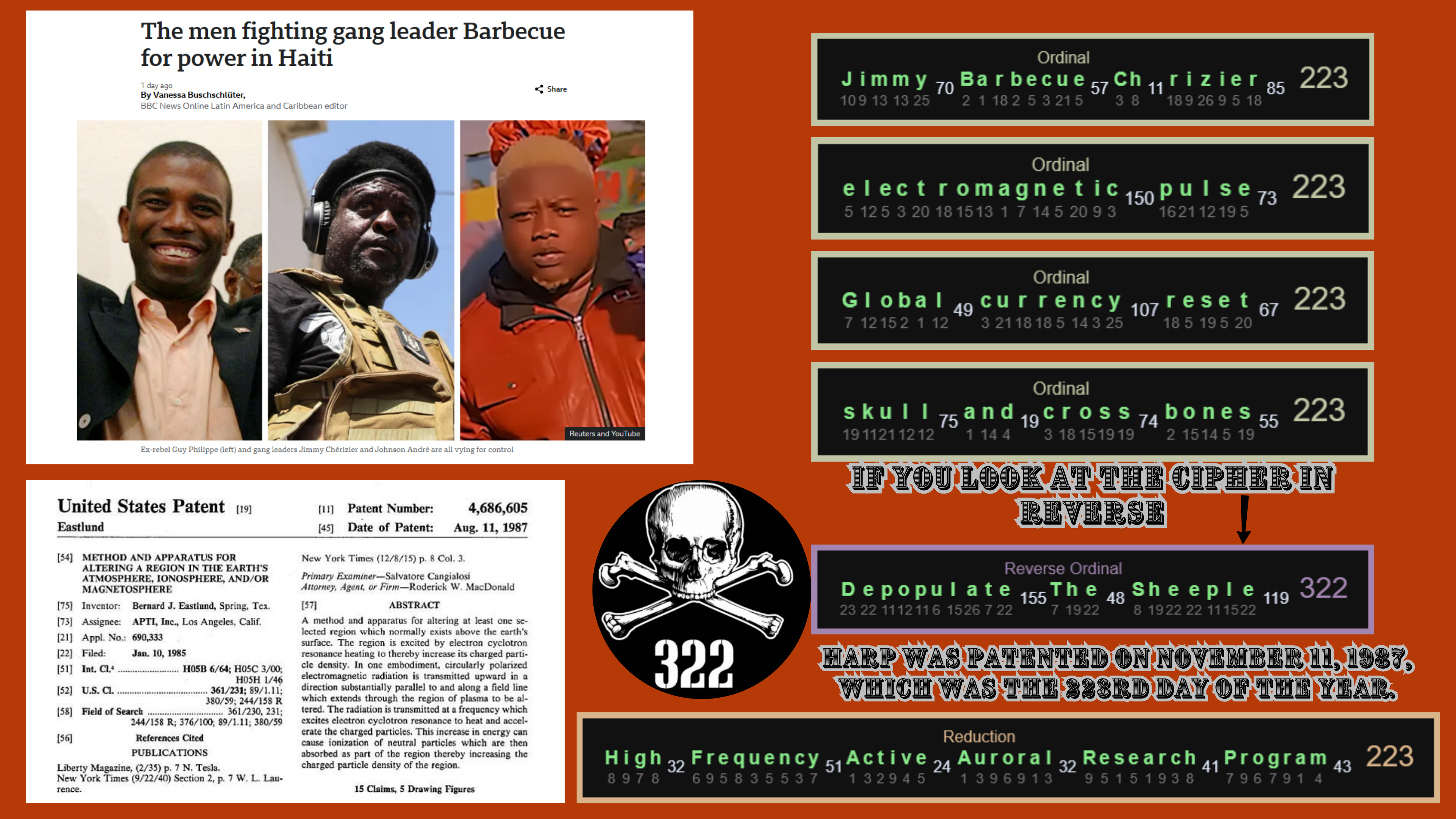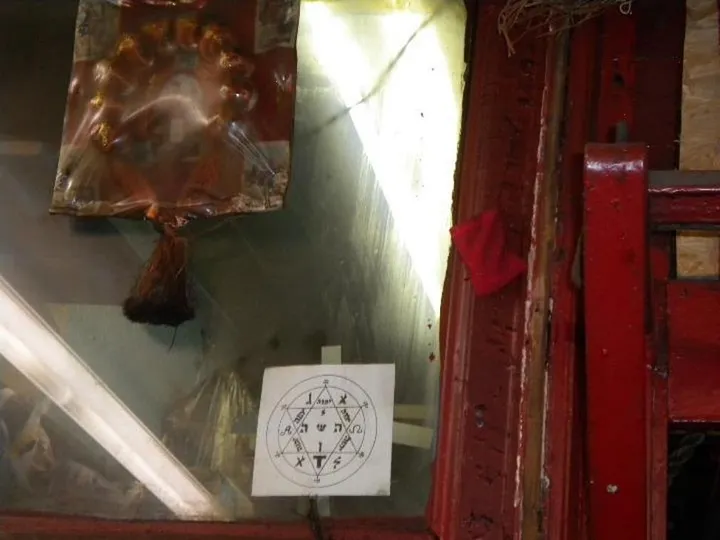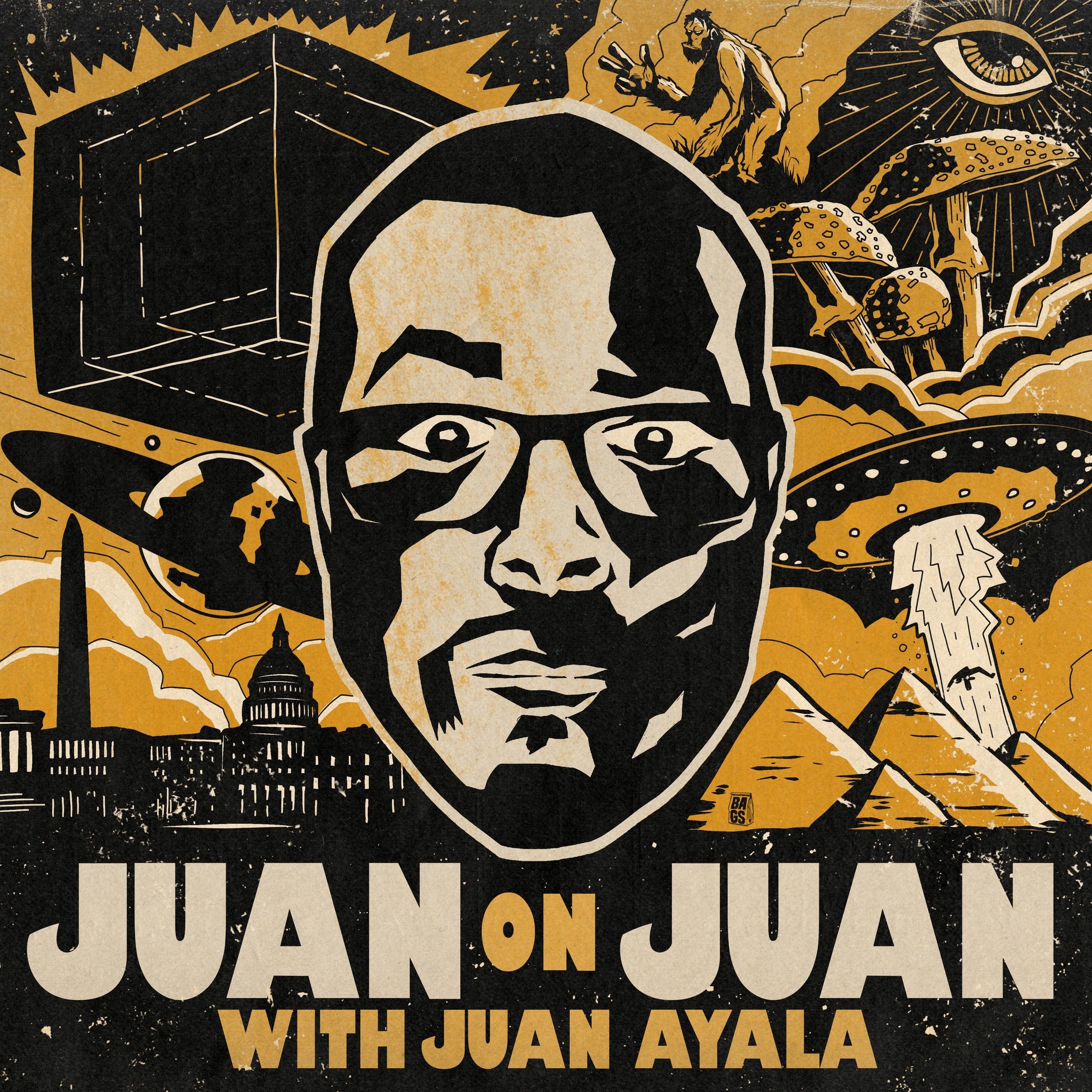
Freemasonic Influence on Voodoo by Tommy Truthful the Voodoo magik code 3-21-24
While researching for this article, I came across a news story from February 2023 that caught my attention. Its headline read like something from a movie: “Haitian Gang Leader Proclaims Control of the Country, Flaunts His Freemasonry Ties on PBS.”
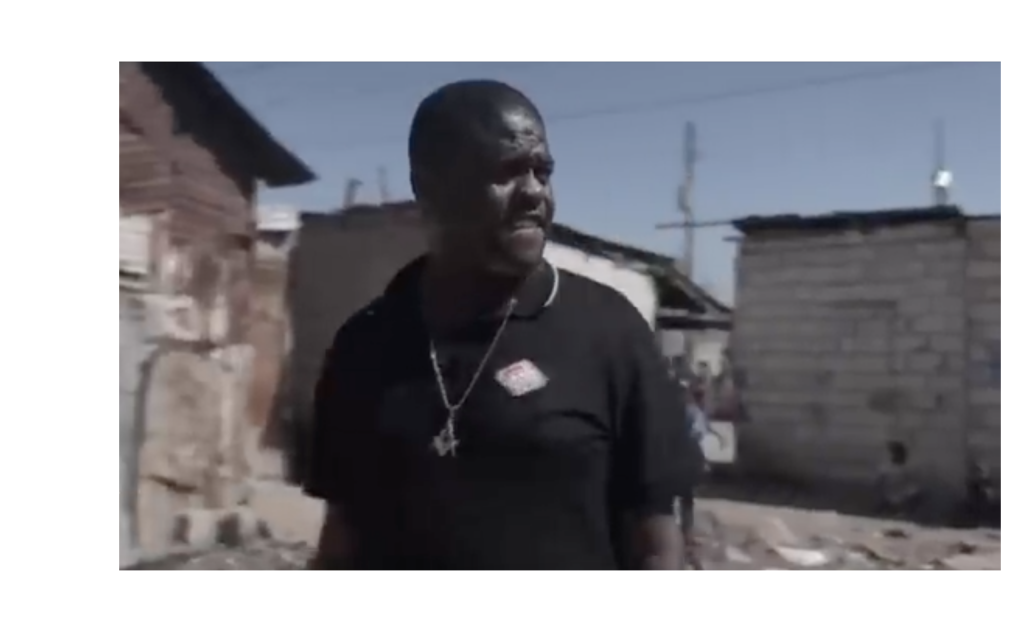
Fast forward to 2024, and we have Jimmy Barbecue, a gang leader whose name sounds like he should be flipping burgers at a Sunday cookout, taking over Haiti. What’s more, he’s wearing the same Masonic compass necklace. If that doesn’t sound mysterious, I don’t know what does.
The connection between Freemasonry and Voodoo in Haiti is not a mere conspiracy theory invented after watching too many episodes of “Unsolved Mysteries.” It’s a natural and fascinating topic. My brother Juan, who hosts the Juan on Juan podcast, delved deeply into this subject in one of his episodes. His excellent work inspired me to write this blog. If you’re curious and want to check out the story for yourself, you can find it right here.
Isn’t it wild how some stories pull you in? This one has all the makings of a Hollywood blockbuster—power struggles, mystery, and a touch of the supernatural. It makes you wonder about the layers of history and culture often hidden beneath the surface of our world.
It makes you think, guys. Is the whole thing going on in Haiti just a story on the world stage, and Jimmy Barbecue is just a character they made up to play the role of the Haitian gang leader?
Jimmy Barbecue’s name is connected to the whole fire motif worldwide right now, with the fires in Texas. His full name equals 223 in English Ordinal Gematria, like “Skull and Crossbones.” There’s also a connection to HAARP, patented on August 11th, 1987, the 223rd day of the year. And with his connection to the fire motif, we know they are using technology to start these fires. Is there a connection to HAARP?
The practices of traditional African religion are manifested in several diverse spiritual cultures throughout the Caribbean. As Africans were enslaved from their homeland, the indigenous healing and spiritual traditions of African religion stepped into the soil of the island of Hispaniola. In Haiti and the Dominican Republic, Africa’s surviving spiritual practices can be seen in various forms. In Haiti, the religion formed what we know as ‘Vodou,’ a term from the Fon people of the region of Dahomey in West Africa that means ‘spirit.’ The religion of Vodou focuses on interaction with spirits known as ‘Loa’ that rule over nature and humanity. Worship involves various magico-religious rituals, the creation of sacred shrines, and interaction with spirits.
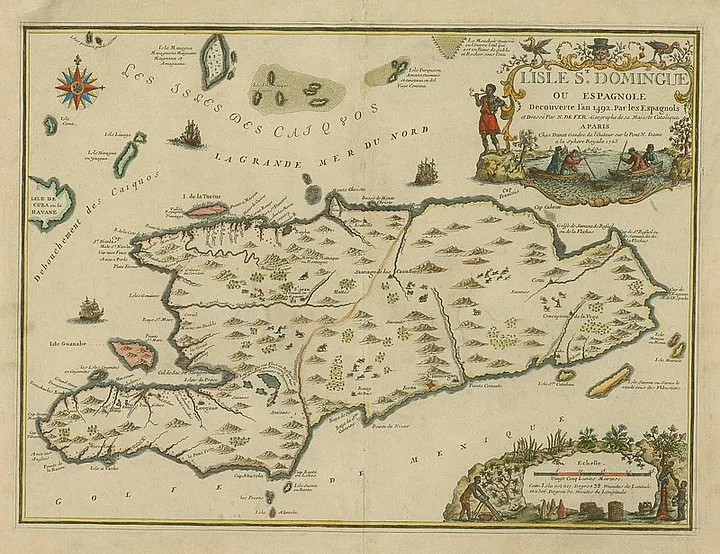
When one looks at the religion of Haitian-based Vodou, one may see some familiar Masonic aesthetics. The square and compass, the use of the letter ‘G,’ and various Masonic tools can be spotted among several of Vodu’s rituals and shrines. As we look deeper into the culture, we can also see several practices and symbols found in Freemasonry.
History
French rule of the island of Hispaniola established the colony of Saint Domingue from 1659 to 1804 in the area of what we now know as Haiti. Freemasonry was officially established in the colony as two lodges were established in 1749. In 1778, a Provincial Grand Lodge was also established under the direction of the Grand Orient of France.
Enslaved people were initially prohibited from lodges as they were required to be ‘free-born’; however, some free people of color were admitted into lodges where many obtained Masonic wisdom. Some traveled to France and became members of lodges. Formerly enslaved people from Saint Domingue were recorded as lodge members in Bordeaux, France. Upon returning to the island, some members would establish lodges based on their familiarity with the Craft and membership.
Historian Sally McKee noted, “Scottish-Rite Freemasonry linked the Saint Domingue and Bordeaux colony. The masonic lodges established in the French Caribbean were part of a transatlantic network, whose mother lodge was in Bordeaux.” Stephen Morin, considered by some as the founder of the Scottish Rite, established several Scottish Lodges in Saint Domingue, as did Martinés de Pasqually, the founder of the esoteric order known as ‘Elus de Cohën.’ Pasqually’s order combined angelic operations, ceremonial magic, and Scottish Rite Freemasonry to return man to his state before the Adamic fall. Morin was a member of the Bordeaux lodge and, in Saint Domingue, started an ‘Ecossais’ or ‘Scots Masters’ Lodge in the city of Le Cap Francais.
The impact of Freemasonry on the Vodou culture could be seen in the life of one of Haiti and Vodou’s most recognizable historical figures. Francois-Dominique Toussaint Louverture, the leader of the Haitian Revolution, was a formerly enslaved person and believed by some historians to be a Freemason. However, many base his affiliation with the Craft on his use of a possible Masonic-based signature he used when signing documents. One of the other leaders in the Haitian revolution, Jean-Jacques Dessalines, who later became Haiti’s ruler under the 1805 constitution, was a well-known Freemason who significantly influenced local Haitian culture. Masonic knowledge would also become disseminated in the practices of some of Africa’s secret societies that operated secretly on the island.
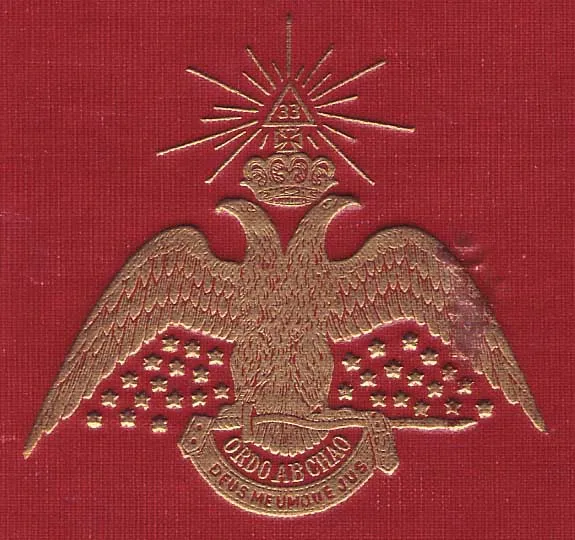
Reflections of the Craft
Some of the subtle reflections from Freemasonry in Vodou are reflected in the use of cultural terms like ‘Grand Master,’ a term used to describe God, or ‘Grand Met Bondye,’ the ‘good God.’ Masonic practices, including using passwords, gestures, and handshakes, can be seen in rituals and various initiations in the Vodou religion. One example is when the’ Houngan’ priest greets fellow priests with a sacred handshake. This is elaborated on when competing priests meet together. Donald J. Cosentino, professor of English and World Arts and Cultures at UCLA, observed, ‘ When competing organs meet at the beginning of ceremonies, they greet each other with elaborate Masonic handshakes”.
The pantheon of spirits in the Vodou religion is composed of several diverse spirits known as ‘Loa.’ Teachings surrounding the Loa speak of many of the spirits as being Freemasons. The warrior Loa of iron, Ogou, and the Loa of the crossroads known as Legba are frequently called Masons. Ogou is depicted and symbolized by the sword, a military symbol and a tool found in Masonic culture. Masonic symbolism abounds in the imagery of Masonic Loa Baron Samedi. Baron Samedi, Baron Kriminel, and Baron La Kwa are associated with the graveyard. The Baron wears a familiar top hat, like those found in lodge regalia, and is often depicted with familiar Masonic symbols of coffins, skeletons, and various Masonic tools. Some images of the Barons are depicted wearing Masonic aprons. The Loa Agassu, Linglenso, and Agau are also considered Masonic Loa.
Vévé are symbols traditionally used to call forth the Loa. Priests (Houngans) and priestesses (Mambos) create sacred diagrams from cornmeal and various powders to invoke the energies of specific spirits. The square and compass are reflected in the Vévé of the Loa Ayizan and Véve of the souls of the dead, known as ‘Ghede.’ In Vodou, the square and compass also symbolize the unity of the male and feminine. One writer has pointed out that the Vévé for the Loa Ayizan Velekete appears very similar to the square and compass with its overlay of the letter’ a and v’ but also has a philosophical component that speaks to Masonic concepts. Ayizan Velekete protects the temple and ritual purity and acts as the defender of morality. In The Craft, the square and compass speak to ideals of squaring our actions as we reach for purity and morality (Robinson 2013).
The Masonic patron saint of John the Baptist also takes a vital role in Haitian Vodou. Legendary Vodou priest and scholar Max Beavior claimed that John the Baptist taught Jesus the secrets of Vodou. His importance is also reflected in a traditional Vodou song. As St. John’s Day is a celebrated holiday in Masonic culture, it is also celebrated in Haitian Vodou.
Legrace Benson, in the work Nou La, We Here: Remembrance and Power in the Arts of Haitian Vodou, speaks of how the Masonic’ All Seeing Eye’ can be seen in some of the elaborate sequined flags (Drapos) used in Haitian Vodou. Benson claims the image came from Jesuits and Freemasons who came to Haiti. (One particular Vodou priestess a friend spoke to claims that Freemasonry introduced the Kabballah and the use of sigils to Vodou.) Some historical accounts tell of examples of esoteric imagery, such as the tetragrammaton and all-seeing eye found in the ritual décor of Vodou temples in Haiti.
Masonic tradition is believed to have affected the conduct of some Vodou ceremonies. In his book Secrets of Voodoo, Milo Rigaud states, “The older houngan requests the assistance of two other houngans—the oldest he can find—by the esoteric prescription that holds three masons together to form a regular lodge.”
Secret Societies
Secret societies exist in Haitian Vodou culture, such as the Bizango and Sanpwèl societies. Masonic references abound in these cultures, with membership in both societies observing 33 ranks, as in Scottish Rite Freemasonry.
Members of these societies utilize various forms of coded recognition. Anthropologist Wade Davis notes that many societies, such as the Bizango society, utilize signs and signals upon entering and exiting ritual spaces and greeting each other. There is an exciting use of symbolic ‘reversal’ in giving and receiving such signs. Ethnologist Andrew Aptar concludes, “Many reversals play in Masonic symbols and even handshakes, suggesting an appropriation of European or Creole signs of power and value through secondary coding.”
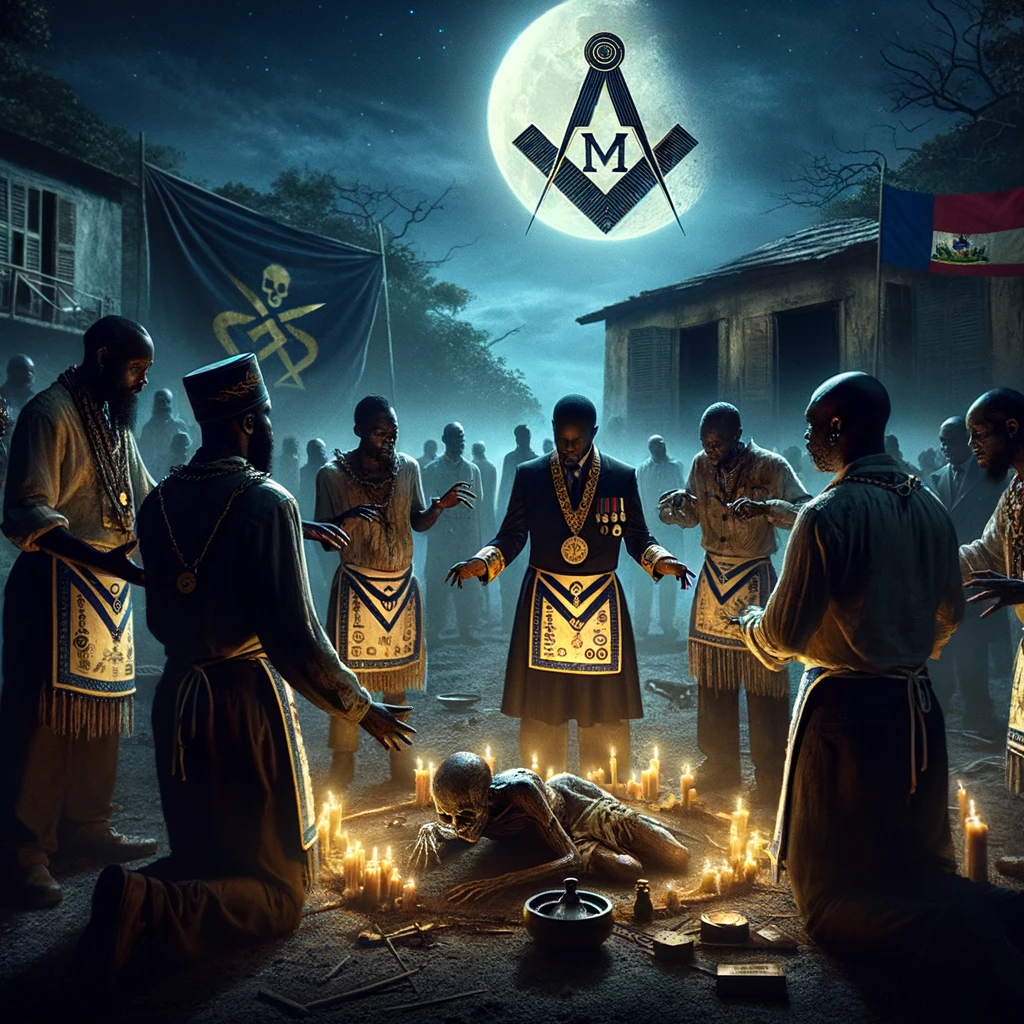
Temples
The traditional Vodou temple is known as the Houmfort. The main ritual area, where most ceremonies occur, is known as the Peristyle. It has specific architectural pieces, such as Masonic lodges, that symbolize various spiritual principles.
Legrace Benson speaks of a Bizango ceremony where the All-Seeing Eye of Providence is painted on the temple’s central pole (Poto Mitan). She also documented the leader of a Sanpwèl society adorning his temple with photographs of himself in Masonic regalia and various lodge symbols. She also observed the leader wearing a white Masonic apron while creating a spiritual bath. Benson also observed wooden coffins used by many secret societies placed by sacred altars. The coffin is a symbol in Freemasonry that represents death and resurrection.
I am reminded that both traditions contain secret elements to preserve their wisdom. Both traditions have survived years of persecution and demonization from those who live in fear and ignorance. Lastly, both traditions have maintained a sacred lineage that has provided community, guidance, and fulfillment for thousands of initiates.
Tommy Truthful Links
Truth Mafia: https://truthmafia.com/channel/tommy-truthful/
YouTube: https://www.youtube.com/@TommyTruthfultv
Rumble: https://rumble.com/c/TruthmafiaTV
Telegram: https://t.me/TommyTruthful
Telegram Group: https://t.me/tommytruthful369
Instagram: https://www.instagram.com/truthmafiapodcast/
Twitter: https://twitter.com/Truth__Mafia
Please check out some of our other content by clicking the link below.
Eclipse Prophecies: The Antichrist Emergence Marco Walks off Camera!!
“Truth Mafia Exposes: Jacob Rothschild, the ‘Evil Emperor,’ Dead at 87”
Alchemical Magic from Silver Screen to Alchemical Gold: Juan & Tommy’s Hollywood Journey
Mortal Engines Plasma Apocalypse predictive programming! VIDEO/BLOG/DECODE
Sources
Avengers of the New World, Laurent Dubois, Belknap Press, 2004
Divine Horsemen: The Living Gods of Haiti, Maya Deren, McPherson, 1983
Face of the Gods: Art and Altars of Africa and the African Americas, Robert F. Thompson, Museum for African Art, 1993
Freemasonry and Vodou, Journal of the Vodou, 2013
Hegel, Haiti and Universal History, Susan Buck Morss, University of Pittsburgh Press, 2009
Institut de la Maison Impériale ď Haïti, http://www.imperialhaiti.fr/the-haitian-empire/freemasonry/
Morin’s Book Plate, Josef Wäges, The Plumbline: The Quarterly Bulletin of the Scottish Rite Research Society, Spring 2017, Volume 24, №1
On African Origin: Creolization and Connaissance in Haitian Vodou, Andrew Aptar, American Ethnologist, Vol. 29, №2 (May 2002), pp. 233–260
Sacred Arts of Haitian Vodou, Donald J. Cosentino, University of California Museum, 1995
Secrets of Voodoo, Milo Rigaud, City Lights Publishers, 2001
The Exile’s Song: Edmond Dédé and the Unfinished Revolutions of the Atlantic World, Sally McKee, Yale University Press, 2017
The Plantation Machine: Atlantic Capitalism in French Saint Domingue and British Jamaica (The Early Modern Americas), Trevor Burnard, University of Pennsylvania Press, 2018
Voodoo in Haiti, Alfred Métraux, Pantheon, 1989
Freemasonry – Institut de la Maison Impériale d’Haïti. https://imperialhaiti.fr/the-haitian-empire/freemasonry/
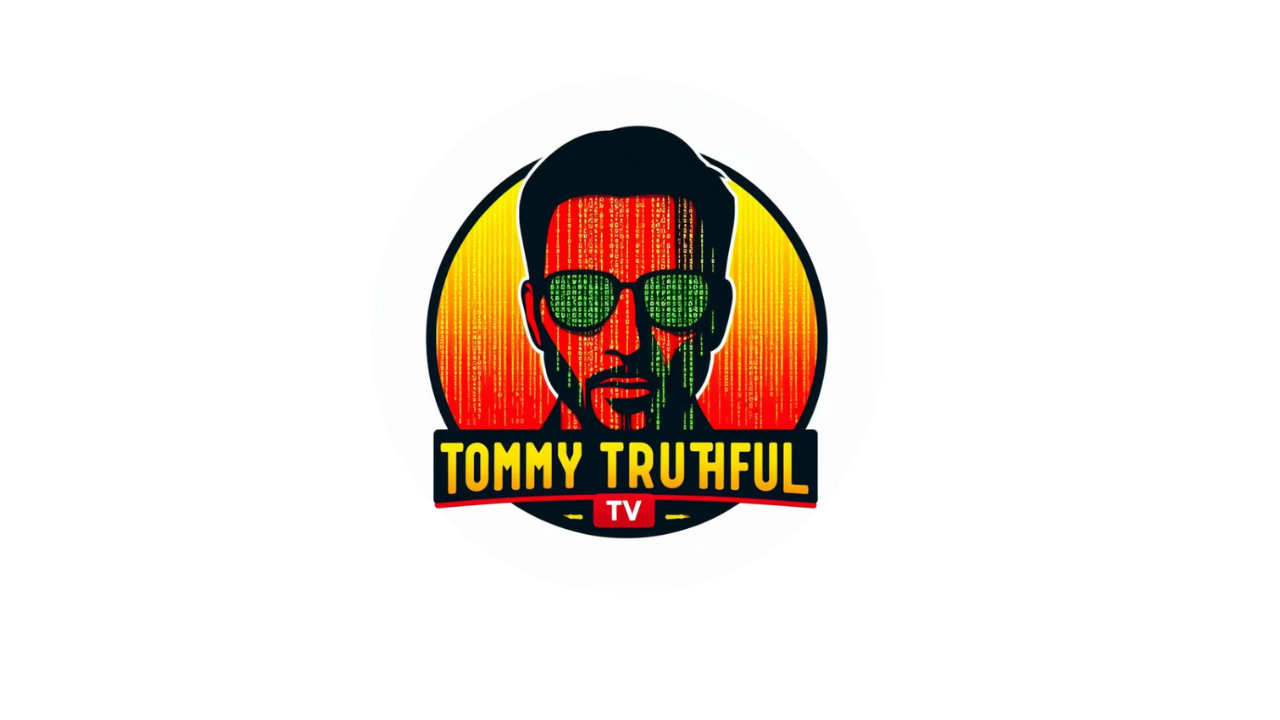
Summary
Transcript
Back again to Jersey air, right? We have the haitian gang leader, alleged cannibal, and they were saying that they were unaliving their victims in the streets and burning them and consuming the flesh. That’s what was going on. And obviously, you have these pictures of the freemasonic symbolism. Now, I’m not just any rare galair guy that takes this for what it is. I go, this is interesting. Why is he wearing that? Because a lot of people in the comments, when I posted that clip, they were like, oh, he just got that on.
Anyone can get a freemasonic. He’s a pseudo Freemason. Is he? Is he a pseudo Freemason? Because. Wrong. Wrong. According to the history. This is history. Okay? Now, I know that a lot of people don’t like mainstream history, but according to mainstream history, almost all. Some. Almost all freemasonic revolutionaries. Haitian revolutionaries were freemasons. One of the first guys, this Francois Domininke, to Saint lover cheer. And that took me forever to freaking say, was a former slave who led the revolutionary forces against the French.
He himself, again, they said that he was a Freemason because of his. This is him right here because of these three dots. Now, the three dots represent the Trinity and the line of masonry. The three degrees. Yes. So this is him. Now, this is where it gets controversial, because in the late 18th century, when the French were occupying Haiti, French Freemasonry came forth. And some of the oldest freemasonic lodges are in Haiti from the 17 hundreds.
And when the slave owners were having relations with their slaves, those children were mixed children, and they had luxuries that other children would not have, including being able to enter Freemasonry. And because of that is why historians believe that there is freemasonic influence on voodoo. Okay? And now that’s very controversial, because right off the bat, people are going to be like, no, right? The white man didn’t teach us this.
Like, we knew all this stuff already. This is coming from Africa and voodoo and all this stuff, which, again, I’m just pointing and looking at the history, okay? Palestine Soloke, which was another haitian politician, military commander, and an emperor of Haiti, was a Freemason and an enthusiast of voodoo. His entire staff, bro, were high priests and male witches at his residence in Port au Prince. Now, this is the guy here, and this is the confirmation of him being a 33rd degree Freemason in France.
This is him. And this is his sword, bro. So they have his sword. And if you look closely, it’s engraved with freemasonic symbolism. This is the sword. Yeah. This was the sword that was given to him. You got the eagle. I think there’s lion, Ox. So this is history. Okay. This is a sword that they have double X, but it’s the freemasonic compass. But it’s interesting that when you zoom out the freemasonic compass, it looks like two X’s.
Yeah. X marks the spot. Right. Wow, how much that sword runs for. I don’t know. It was the first ever. He had a whole regali and everything. Okay, so this is where it gets controversial, because this is how I was mentioning earlier, the influence of French Freemasonry in voodoo can be seen, bro. Here we go. So we have the Masonic, the main voodoo God. I think his name is Bode.
Could be getting that wrong. Let me look it up here. Main voodoo deity. No, Dambala is one of them. So Bonde is what Chucky says. He says Bonde, dembala. Here he is, grandma, which is grand met, which means the great creator or the great the which. That’s a whole thing in Freemasonry. Have the great architect of the universe. Right? So the great architect of the universe. So you see that freemasonic influence there.
And it’s in the iconography, bro. Okay. You have the. Again, Freemasonic, the G. And. Oh, that’s just one example. Okay, well, here are some of their sigils that they use. And this is from a Freemasonry and voodoo by Clay Robinson at the University of Florida, a paper that he did on the whole entire thing, if you want to check that out. That’s my source for that. And he breaks it down.
Some of the main sigils that they use for the invocation of certain deities are based off of freemasonic symbolism. Okay. You even see the three dots in the two slides prior to that one as well. The one right before that on the left, it looks like the three dots. That’s new information for me. I never knew that, but I understood the three. That’s cool. Dumbbala right here. So you got the freemasonic compasses.
Okay, so that’s a symbol for Dumballa. Yeah. This is the sigil. So what they use, again, this is a sigil they call a veve or vivi. It’s a sigil that they use to represent the deity on this realm. And that’s how they invoke the deity into this new Chuck. I’m a huge child’s play Chucky fan. And the new Chucky, he has to do a sacrifice for Dumbala. So he goes to the White House.
Right? The White House is the Linster house. It’s the Templar house, it’s the freemasonic house. And he has to do a sacrifice at the White House. So Dumbala will grant him life because he’s starting to age. Chuck E. Doll is starting to age because of christian magic. That’s what the show says. That’s why Dambala is mad at him. So that’s the reason why I know that word. So when I watch this show, I’m going to see if they even have this symbol in it.
Yeah, bro. And again, I’ve looked at this sigil before. I’ve done an episode on zombies, and I didn’t make the connections until I started making the connection. I’m like, okay, what do Freemasons have anything to do with voodoo? Okay, and so the rabbit hole gets deeper because as I was going through this research for this minute and a half clip, by the way, for my video guy, he’s like, hey, make a clip.
We’re going to try out this new format. Make a clip on something. I was like, all right, well, let’s capitalize off the headlines. Let’s capitalize off the cannibals and all this stuff. And then when I started doing the research on research I already had, the rabbit hole was getting deeper and deeper. Don’t. I was like, oh, I couldn’t finish. You know how I am, bro. Like, I have 150 slides on palm trees, bro.
Palm trees. I got some palm tree stuff to show because the Haiti flag symbol is a palm tree, and they’re all going to Florida. Yes. Which is a palm tree as well. So here, let’s continue here. So the dambala, which is their snake deity, et cetera, et cetera, obviously, freemasonic compass right there. Compass, right again, people are probably going to get, I mean, this is for the Patreons.
So I said, okay, this is really weird. Has anyone ever linked necromancy with freemasonry? Turns out there was a guy in the mid 18th century named Johan George Strofer, okay. And he was a german charlatan, independent Freemason and necromancer. This dude was performing masonic necromantic sessions, bro, in which he would conjure ghosts and. Bro, so check it out, because this all ties into the larger picture of what Haiti is and everything that’s going on, right? So it’s about the manipulation of people’s perception, sorcerers of the subconscious, cinemagicians at work, quite literally, because this Johan George Strofer guy was the precursor to early film, bro, because he inspired phantasmagoria shows, which were popular in Europe, which were essentially haunted houses, bro.
This was the first ever haunted house experience. So people would go to this dude’s shows. Now, if he was actually conjuring spirits or not, we don’t know. But what’s interesting is that he would tell people, you need to come sleep deprived. You need to fast, so you’re hungry, and you’re going to have an experience. Some people said that he would drug the salads, so they don’t know if they were actually experiencing something or not.
Okay? And this is the precursor to film and what some people say, why we have haunted houses. So think about Hollywood, the horror nights. And any haunted house experience that you go to comes from phantasmagoria, which is the use of magic lanterns and projections. But this is one of the first forms of multimedia, aka movies. Okay, from this guy, mind you. What do we have in Haiti? Well, we have necromantic voodoo, because part of voodoo is not only the chemical aspect, but also the black magic aspect of it.
And then we have the multimedia. The first ever book on zombies came from Haiti. The first ever movie on zombies, which was inspired from the book on zombies in Haiti. Again, inspired the first movie, bro, in 1932. So we have this connection between a freemasonic, necromantic guy, right? Inspiring the movies that we know today, right? So here I was talking about the magic island, and a zombie is a mythological, undead, corporeal revenant created through the reanimation of a corpse.
Again, either through the uses of substances or through the use of magic. Okay? And here it inspired 1932. And the movie is about a young woman’s transformation to a zombie at the hands of an evil voodoo master. So I thought it was interesting that all this is popping off. And then we have this guy popping into scene, which would fall in line with every revolutionary needs to be a Freemason.
He stepped into power when the other guy stepped down. Okay. And according to the legends, right? Some sources claim that masonry was so integral to haitian culture and leadership that any president of the country who was not a mason prior to office was ordained on the occasion. So was he ordained on the occasion because he stepped into power? I mean, that’s the latest we got, that they’re stepping into power.
Now. Another interesting connection was. .


